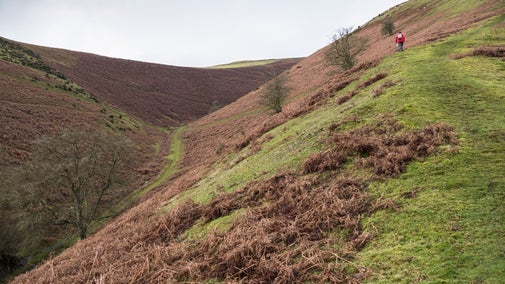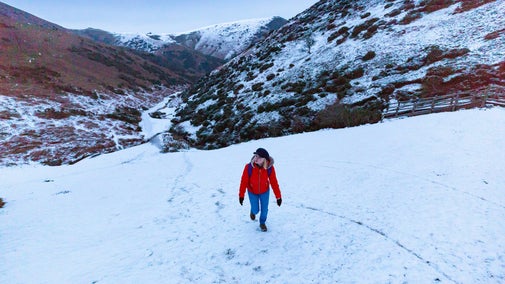The Pipe Walk at Carding Mill Valley
Shropshire & Staffordshire
This walk is a great way to see some beautiful views and also to really get to the heart of 'those blue remembered hills', as mentioned in the poem by A E Housman.
Start point
Carding Mill Valley, grid ref: SO411949Trail information
More near here
The Burway Loop: a walk to the top of the Long Mynd
Take a challenging walk from Carding Mill Valley up to the highest point of the Long Mynd, which offers impressive views across Shropshire and beyond.

Lightspout Waterfall walk
Starting at Carding Mill Valley at the heart of the Long Mynd enjoy a sometimes challenging walk along a stream to the 4-metre cascade at the picturesque Lightspout Waterfall, taking in impressive geology and wildlife along the way.

Reservoir walk
This shorter walk through the valley ends with beautiful views of the reservoir and beyond.

The Long Mynd and Ratlinghope walk
A challenging 10-mile circular walk taking in both sides of the Long Mynd, with impressive views over Shropshire and a halfway stop at the pub for refreshments.

Get in touch
Our partners

We’ve partnered with Cotswold Outdoor to help everyone make the most of their time outdoors in the places we care for.
You might also be interested in
Outdoor activities at Carding Mill Valley and the Long Mynd
Enjoy the great outdoors at Carding Mill Valley and the Shropshire Hills. Find out about the best routes and keeping yourself safe while out walking and cycling on the Long Mynd.

Things to do at Carding Mill Valley on the Long Mynd
Explore the great outdoors at Carding Mill Valley and the Long Mynd. Enjoy a bracing walk, a challenging bike ride, a wild swim, have fun with the family or just take in the views.

Visiting Carding Mill Valley and the Shropshire Hills with your dog
Carding Mill Valley is a one pawprint rated place. Explore miles of footpaths and open countryside with your dog at Carding Mill Valley and the Shropshire Hills. Find out how to keep the wildlife and your dog safe on your visit.

Cotswold Outdoor: our exclusive walking partner
Learn about the National Trust’s ongoing partnership with Cotswold Outdoor. Find out how they help us care for precious places and the exclusive discount available for National Trust supporters.

Staying safe at National Trust places
The special places in National Trust care sometimes come with a few risks for visitors, be it coastline or countryside. Find out how to keep safe throughout your visits.

Follow the Countryside Code
Help to look after National Trust places by observing a few simple guidelines during your visit and following the Countryside Code.

Walking in Shropshire and Staffordshire
Find out about the best walking routes around Shropshire and Staffordshire, including gardens, parkland and estates, ideal for family walks.

